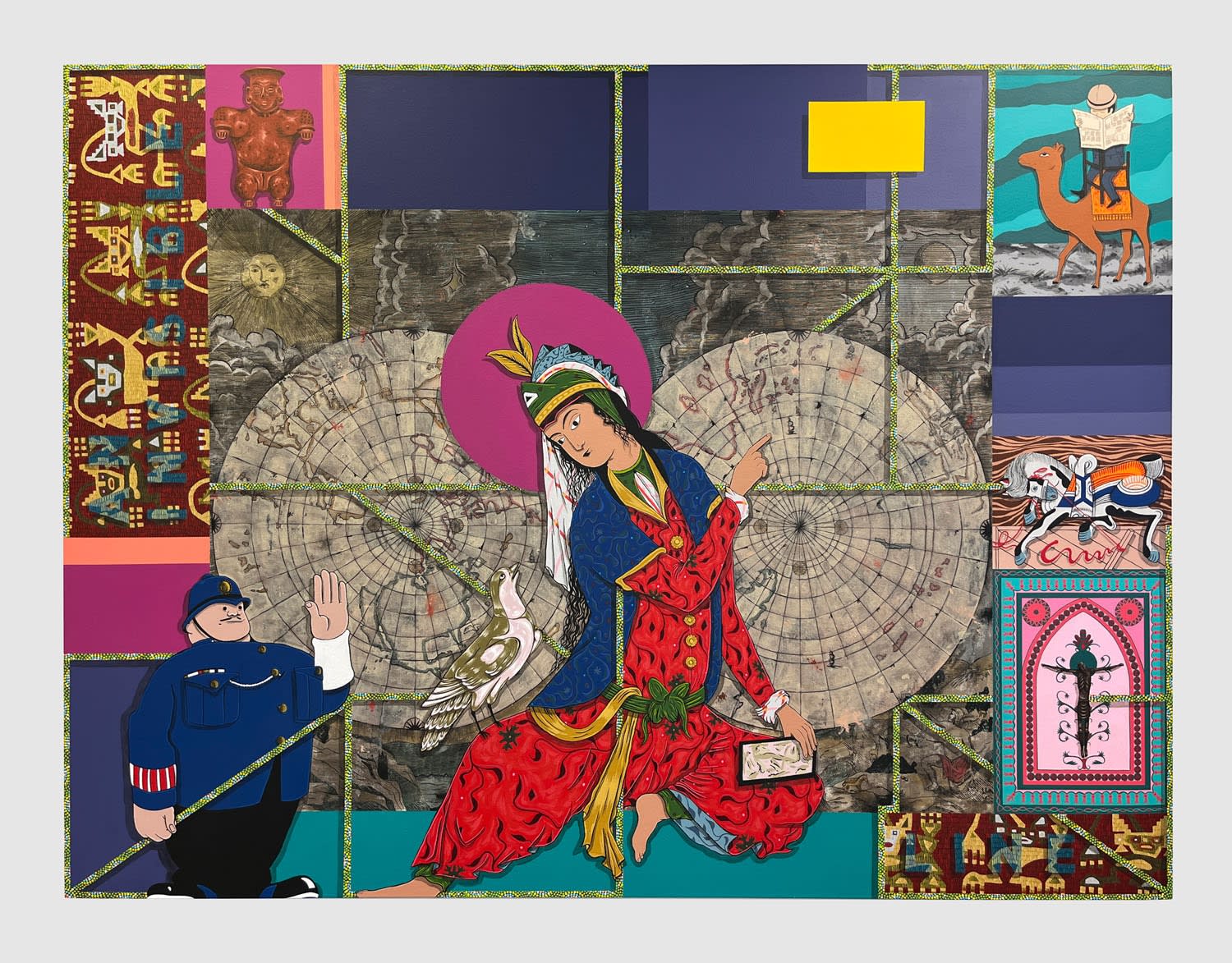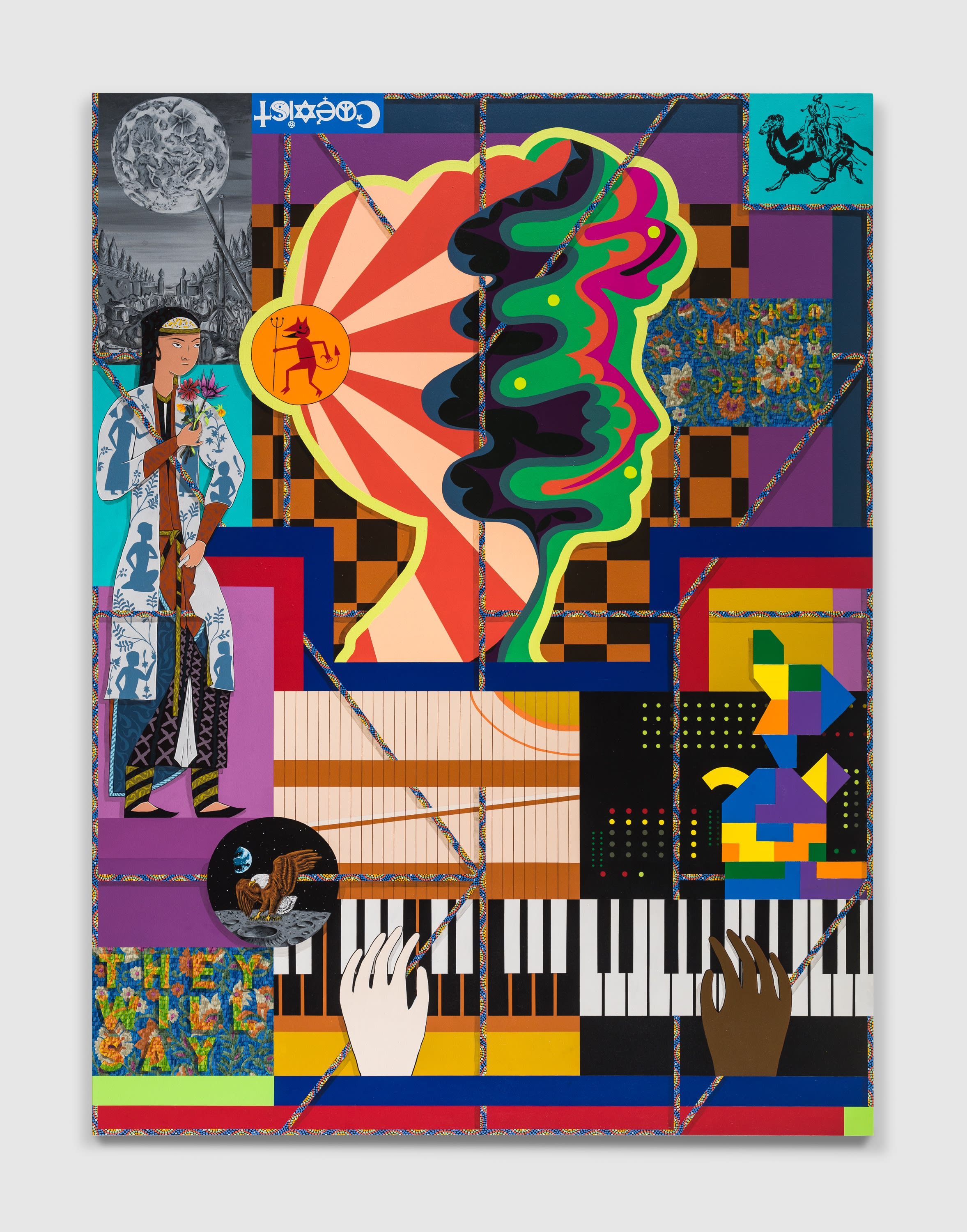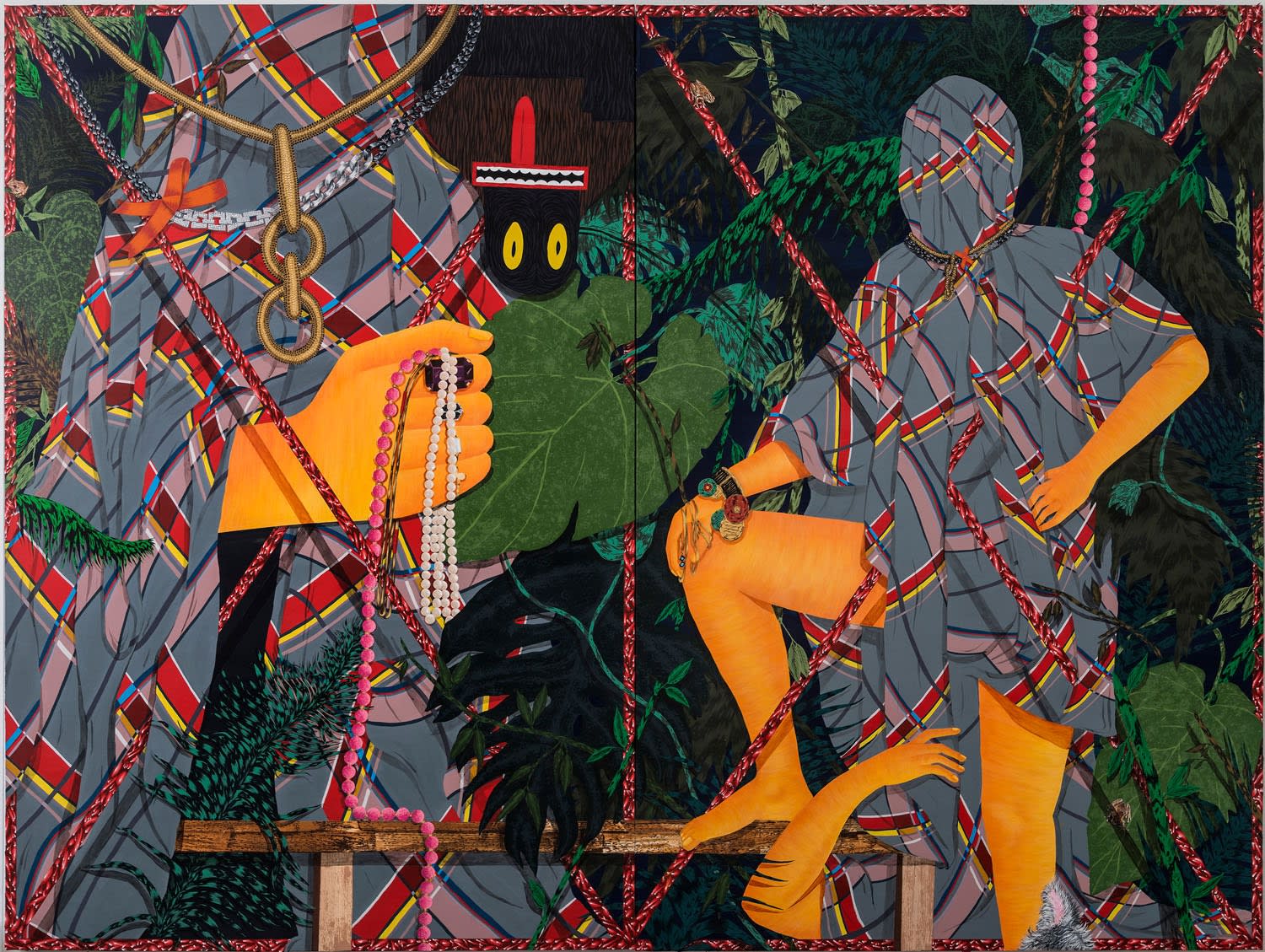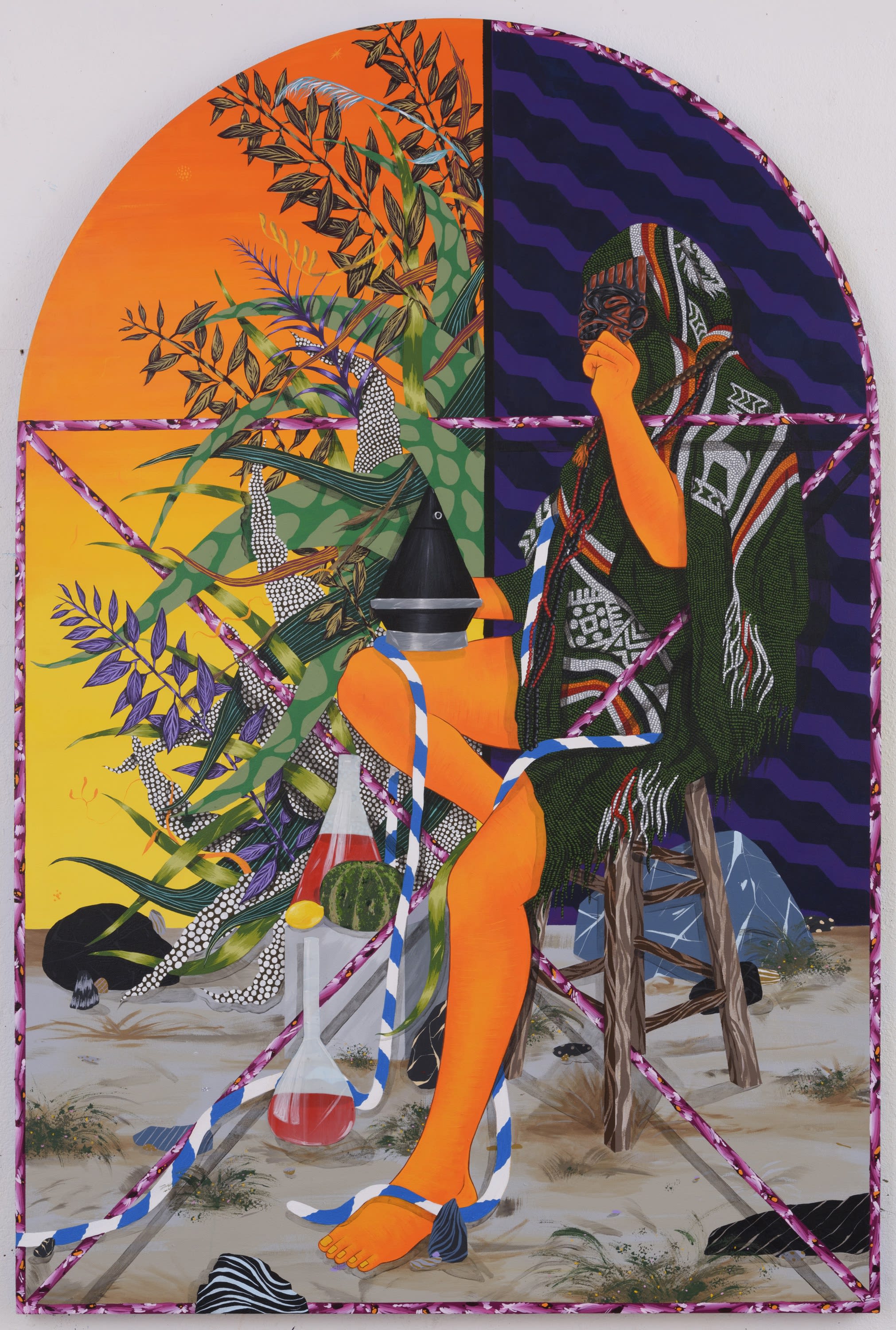
The Fowler Museum’s latest exhibit is transcending boundaries.
Until May 14, the Fowler Museum will feature Iranian American artist Amir H. Fallah’s “The Fallacy of Borders,” which is an amalgamation of pieces comprising paintings, stained glass, sculptures and textiles that explores and challenges conceptions of identity, personhood and diaspora among other themes. Curated by Amy Landau, the exhibit seeks to raise inquiries concerning societal notions of borders and culture – depicted in saturated colors and boundless layering of lines and imagery.
Fallah and Landau spoke with the Daily Bruin’s Paria Honardoust about themes of personal upbringing and identity expressed in Fallah’s art and the approaches to collection curation.
This interview has been edited for length and clarity.
Daily Bruin: What was the inspiration behind the title “The Fallacy of Borders”?
Amir H. Fallah: The title was actually an idea that the curator Amy Landau came up with, but it really speaks to a lot of the things that I’m interested in my work, really stemming from my own background of coming to America as a refugee and how borders around countries are these invisible lines that are drawn by those in power. They’re constantly being moved and manipulated and changed by whoever essentially has the biggest army, and they’re really not things that are real. There’s nothing that separates America and Mexico or America and Canada. It’s just that a government decided to create this invisible barrier where on one side, people don’t have access to the same privileges that people on the other side do. So a lot of my work tackles these complex issues around immigration, border issues, refugee issues and all the complexities that surround it.
 Amir H. Fallah, An Invisible Line, 2022. Acrylic on canvas. 72 x 96 in
Amir H. Fallah, An Invisible Line, 2022. Acrylic on canvas. 72 x 96 in
DB: How has your cultural background, upbringing and experiences influenced your art?
AHF: I was born in Iran, so there’s definitely a lot of Iranian influence on the work. But there’s also a lot of influence from other cultures such as Mexican culture, American culture. I grew up living all over the world. I view myself as a cultural chameleon who really doesn’t belong 100% to any one culture, but really has had to create my own kind of hybrid identity to blend and survive. And that has to adapt to a wide array of beliefs, traditions, histories. So a lot of my work is dealing with these issues of “What does it mean to be Iranian? What does it mean to be an American?”

Amir H. Fallah, They Will Say A Collection Of Untruths, 2022. acrylic on canvas. 96 x 72 in
DB: What was the process like choosing the displayed pieces at the exhibit?
Amy Landau: Amir and I worked on that together, and we wanted to choose an early work. The earliest dated work in the exhibition is from 2014, which is a portrait of his wife, and then we went to the latest works, which are his sculptures. Then we had this wonderful opportunity to design the seating together. It’s in the “Beautiful/ Decay” room that’s focused on the art and design magazine that he created. He started when he was 16. We created seating based on one of his Tondo paintings.

Amir H. Fallah, Eternal Companion, 2014. acrylic, collage, colored pencil and oil on paper mounted to canvas. 90 x 120 inches
DB: In your art, a lot of your subjects are veiled. What is the significance of this?
AHF: When I first started doing those portraits, I was thinking about how what we physically look like doesn’t really tell much about who we are, our nationality, our background, our family. What we look like is a very superficial read of who we are as a person. And so historically, portraiture has always been about showing people’s physical appearances. So I came up with this idea of doing a series of portraits where you don’t show anybody’s physical likeness. Their skin color is concealed. The skin in the paintings are these dayglow, orange colors. The bodies are generalized.

Amir H. Fallah, Genealogy, 2017. Acrylic on canvas. 72 x 48 inches
DB: How would you describe the exhibit to someone who has yet to visit it?
AL: He (Fallah) is a deeply humane and wildly curious individual. He’s a kind and generous spirit, and all of that comes across in his work. So going through the exhibition, one has the sense of his humanity, his curiosity and his kindness. And his work can be enjoyed for the rich colors, the patterns of different images, and they could also be engaged in terms of the moral and ethical stories he tells.

